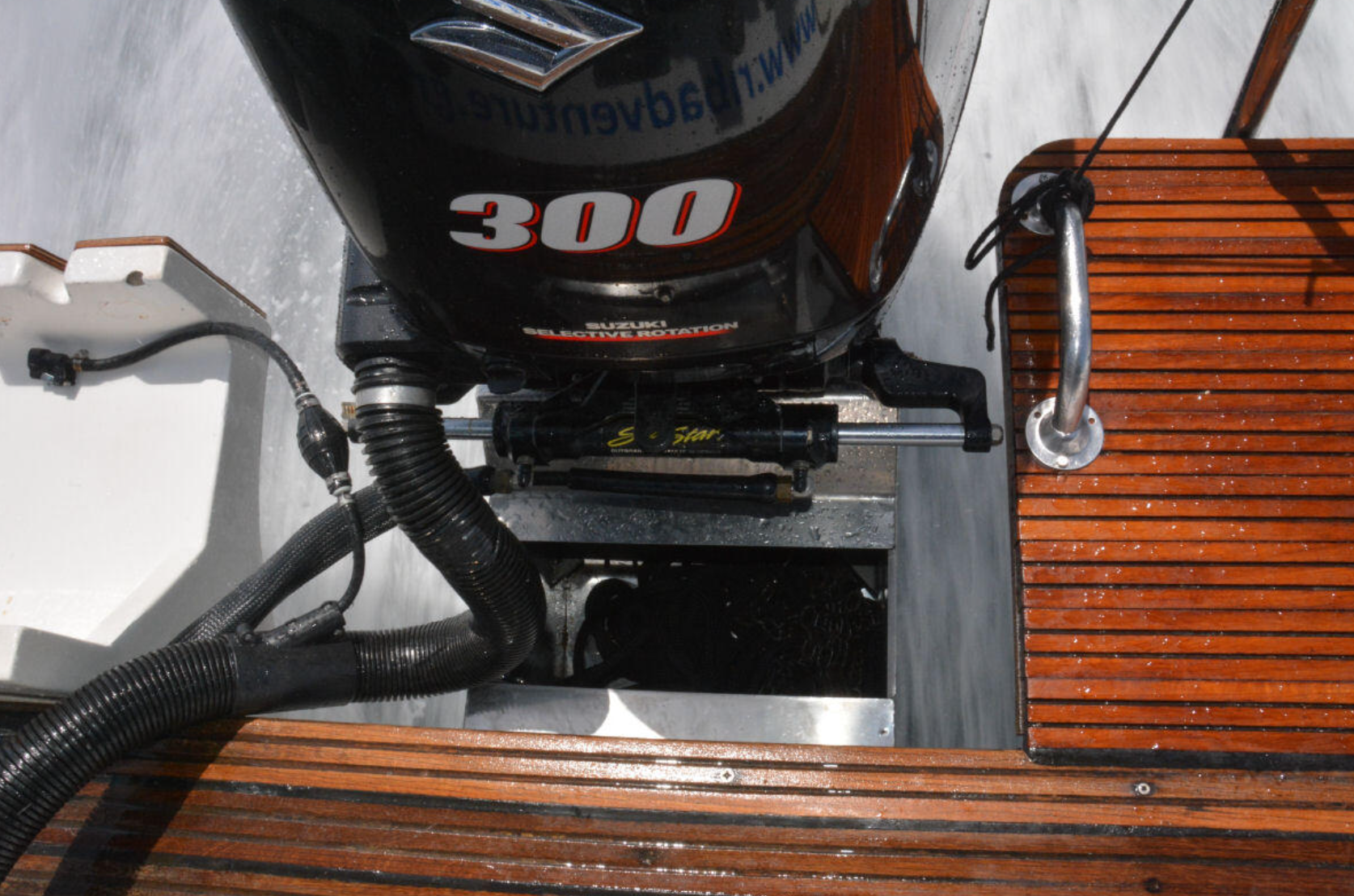Does a Bracket Help Outboard Performance?

Before deciding to mount an outboard bracket or jack plate on a boat’s transom, a captain or technician should first determine if the accessory is compatible with the intended boat. That also means knowing what is expected from the addition and to what extent. Weigh the consequences and decide the boat’s intended use before drilling into the transom.
Knowing if the mounting of a bracket will improve the performance of our boat depends on the center of gravity/buoyancy, the type of hull, the engine or the engines we are going to mount and on the intended use of our boat.
Moving Back
First, we need to understand that the installation of a bracket results in a backward shift of our boat's center of gravity. The extent of the backward shift of the center of gravity will depend on the length and the weight of the bracket and on the weight of the engine or engines. But can this shift be tolerable for our boat, is it needed or is it required to be able to effectively use our boat? If none of the above is true, then the backward shift of the center of gravity can have negative effects on navigation, particularly when mounting one or two four-stroke engines with XL lower units.

There are types of hulls, including stepped bottoms, where the boat’s weight is so "strict" that no change is accepted and the mounting of a bracket would only result in negative effects. The philosophy of the stepped hulls is based on the interaction of the center of gravity and the center of buoyancy. If this balance is compromised there will be afflictive consequences on the navigation of the boat.
Positive and Negative Results
There are boats that have their bow high by nature. In these boats, the backward shift of the center of gravity would lead to an even higher bow lift with unpleasant effects on navigation. On the other hand, there are boats designed to keep their bow very low and a backward shift of the center of gravity could induce beneficial effects.
Of course, there are situations where the hulls have design defects or the boats are not properly weighed. In these cases, the bracket is used to correct the above defects. However, we should not do injustice to some boat manufacturers who have foreseen in advance the application of a bracket and so they "construct" their boats accordingly.
Advance Work
It is understood that before we decide to mount a bracket, we need to be sure if it matches our boat and how its use will affect the center of gravity. At the same time, we must consider how long the bracket should be based on what we want to achieve with our boat.

- First of all, the mounting of our engine farther back on the bracket makes the stern heavier. This usually causes the bow to rise. With the bracket, we can now lift the bow higher when we trim up the engine. Response to the trim changes is greatly improved.
- We can also mount the engine higher on the bracket than on the transom because the water flowing out from the bottom of the transom is rising up. This means that the hydrodynamic drag is reduced on the lower unit because the immersed area is smaller. Furthermore, the load on the engine is reduced so the engine can increase its rpm, which permits using a higher-pitch propeller.
- Our propeller is less submerged in the water when running — after we have mounted the engine higher. This creates cleaner water flow compared to the more turbulent water observed immediately behind the transom. The result is better “bite” for the propeller so we can use a more efficient propeller that’s designed to run partially surfacing.
All the above factors should result in an increased top speed and improve the overall fuel consumption of our boat.

Some other benefits of having the engine farther aft are more free space inside the boat and around the engine. Because the engine is farther aft, reduced noise inside the cockpit could be another advantage but since today’s modern four-strokes are so quiet, it’s not as noticeable as it would have been with two-strokes of yesteryear.